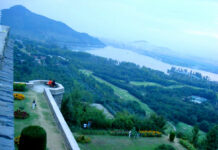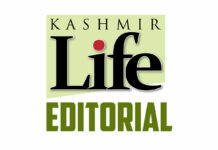Ahead of NSA level of talks between India and Pakistan, the Line of Control and parts of the International Border in Jammu & Kashmir witnessed increased reactivation and the rival armies pounded each other for many days. Whether the escalation is aimed at forcing an agenda on the talks or to derail the nascent intuitive is not known. In fact, the factors for the current escalation may never be known. But what is already obvious is that more than a dozen Kashmiris’, living on either side of the divide, are dead and scores of families are currently living under the sky as the high-cost mortar shells that rained on them took away their shelters.
Tensions between the nuclear-armed neighbours have already sent the alarm bells ringing in the UN and it already made its concern public. It led the world press run commentaries asking the two not to engage in violence and talk things out.
Almost a week after the Poonch shelling, Chief Minister Mufti Sayeed flew to Slamabad, the trade facilitation 9 (TFC) for the cross-LoC barter, to insist that a single instance is not a broad generalization. He said most of the LoC is calm and peaceful and whatever happened is just limited to a single or a few places.
As the state chopper was flying Mufti and a number of bureaucrats to the ‘gateway’ in Slamabad, the police in Srinagar was busy restricting the movement of the Kashmiri separatists. Some of them were driven to the police stations and some restricted to their homes. As the news flashed, it triggered a rethink. All, but one, were set free and the process was justified as consequence of “communication gap”.
Restrictions and subsequent release of separatists was a quick follow up to the invitations that Pakistani High Commission in Delhi extended them for a meeting with Pakistani NSA Sartaj Aziz. Similar exercise in past led to cancellation of the India-Pakistan talks, a process being revived now.
India and Pakistan have exhibited their relationship as that of Siamese Twins for the entire course of their post-partition existence, mostly on Kashmir – that witnessed at least two of the three wars they fought excluding Kargil. But what makes the two nation states interestingly different is that every time they have to send the message across, they liberally resort to military power on the LoC. While they lose shells, the eventual cost comes to Kashmir – the two cousins living on either side and divided by a line that was invisible till the fence cropped up in last decade.
Populations living on IB and LoC in J&K have been living a highly uncertain life for most of post-partition era. J&K government is still grappling with the rehabilitation of the population that was displaced by 1965 war. Last 25 years were so difficult that people survived in dungeons and rarely saw the light of the day. It was only after the November 2003 ceasefire that Atal Behari Vjapayee initiated, that semblance of the normality restored in the LoC belts.
Dr Manmohan Singh regime in its first term tried to follow it up. People at the highest levels in Islamabad and Delhi were talking of making LoC porous to the extent that people from Srinagar can drive down to Muzaffarabad and vice versa. All the big talk fizzled out and then BJP government took over. With Prime Minister Narendra Modi, now convinced, that there is no alternative to talks, can J&K expect the exchanges between the two neighbours would be peaceful after the NSAs meet?









